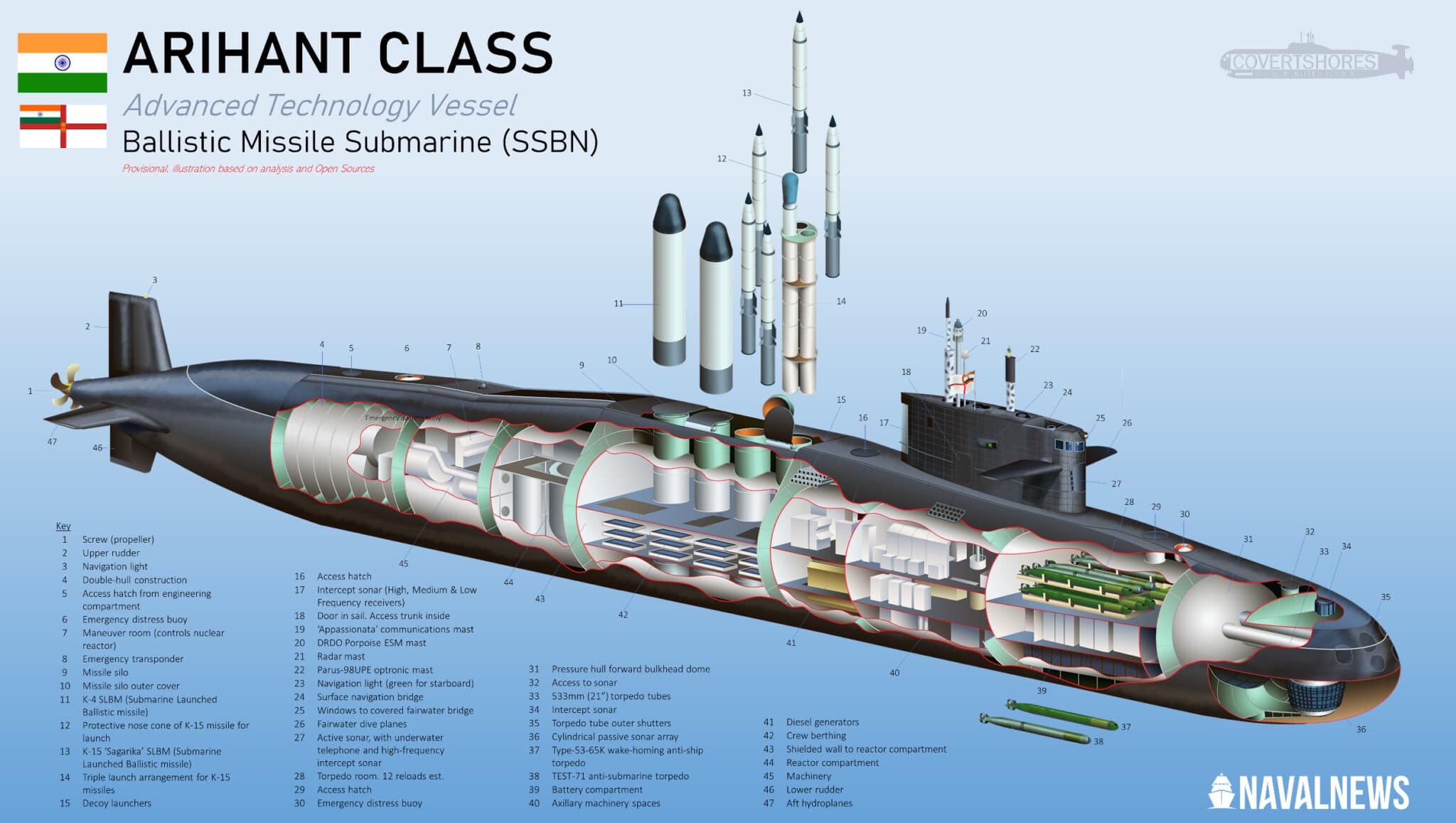
By Sher Bano 24 January 2022
As per a report by the UK-based Janes Defence Weekly on December 29, 2021, India on November 23, 2021, quietly launched its third SSBN (Nuclear Missile Submarine) at the secretive SBC (Ship Building Centre) in Visakhapatnam. Neither the Indian Navy nor the Ministry of Defense confirmed the news but according to the sources in the SBC (Ship Building Centre) in Visakhapatnam and Indian navy, the launch of the submarine was confirmed. The newly launched SSBN called S4 could be critical for India’s credible nuclear deterrence like the previous two SSBNs and could have serious implications for South Asian security.
The submarine has been built jointly by the DAE (Department of Atomic Energy), DRDO (Defence Research and Development Organisation), Russian technicians and scientists, and Indian Navy personnel. The publication also reported that the submarine has been relocated near the fitting-out wharf that was previously occupied by the INS Arighat which was launched in 2014 but still awaits its commissioning delayed due to pandemic. As per the report, the satellite imagery shows that at 7000 tonnes, the SSBN is slightly larger, with 125.4m load waterline measurement as compared to the 6000 tonne and 111.6 m load waterline measurement of INS Arighat which is considered the lead boat in its class. Hence the S4 could be categorized as a successive boat of Arihant class variants. The magazine further reported that the additional length of the submarine shows the expansion of the vertical launch system of the submarine, it could support nearly eight launch tubes (missiles) which is double as compared to the previous SSBN. The submarine would be able to carry eight K-4 SLBM (Submarine Launched Ballistic Missiles) or 24 K-15 SLBMs with 3500 km and 750 km strike range respectively. However, the K-4 missile is still under development and has not been launched yet.
India in its quest to complete its nuclear triad plans to build six SSNs (Nuclear Powered Submarines). The naval platform is considered to be the most significant leg of the nuclear triad as it assures the second-strike capability of the state. But looking at India’s ambiguous NFU (No First Use Policy) such developments could become a huge threat to the strategic stability of South Asia. The development of SSBNs by India is a matter of concern for not only Pakistan and the Indian Ocean littoral states but for the international community as well. With the development of nuclear-powered submarines, India has entered the club of a handful of countries that can construct, design, and operate such submarines.
The belligerent and aggressive attitude of India’s leadership raises serious concerns regarding responsible nuclear stewardship in India and threatens the strategic stability of South Asia. Construction of SSBNs and increased frequency of missile tests every year shows the aggressive posturing of India. Moreover, the deployment of nuclear weapons by India also requires the international community to reassess the non-proliferation benefits provided to India by various arms control and non-proliferation cartels. Pakistan being a responsible nuclear state is committed to the objective of strategic stability in the region. Pakistan believes that the only way forward for both states is to agree on nuclear and missile restraint measures.
Pakistan is also continuously strengthening its sea-based capabilities in order to deter India’s triad of land, sea, and air-launched nuclear weapons. There should not be any doubt about Pakistan’s capabilities and resolve to the challenges postured by the latest developments both in conventional and nuclear realms in South Asia. Pakistan has already built Baber-3 (Sea Launched Cruise Missile) that have MIRV (Multiple Independent Re-entry Vehicle) capabilities to counter the growing submarine capability of India. It would provide a credible second-strike capability to Pakistan which would augment the existing deterrence considering the provocative nuclear posture and strategies in the neighborhood by developing ship-borne nuclear missiles and nuclear submarines. Other than that, even though India had successfully tested K-4 missiles, its range still remains sub-optimal which would require the SSBN to operate at the Bay of Bengal’s northeastern fringes. This means that these submarines in order to target China’s economic and political hubs would have to travel around the Bangladeshi and Burmese littoral waters. Hence India’s sea-based deterrence capability would remain incomplete unless it is able to deploy an SSBN fleet with intercontinental-range missiles.
